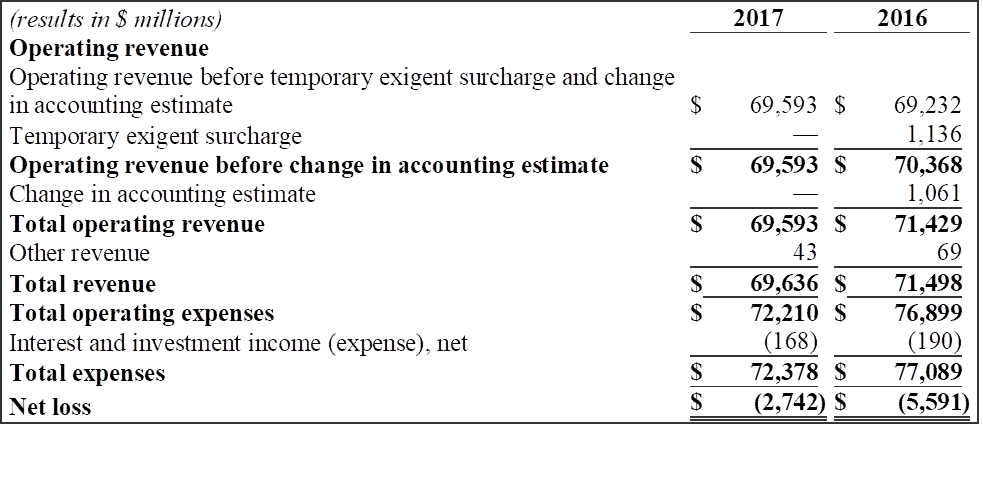Late yesterday, President Trump signed an executive order to set up a special task force to review the business practices at the United States Postal Service, saying that the agency “is on an unsustainable financial path and must be restructured to prevent a taxpayer-funded bailout.”
The task force is set to be led by Treasury Secretary Steve Mnuchin with the intent of reevaluating the business practices of the post office to best resolve the agency’s financial difficulties. This task force echoes similar efforts undertaken in 2002, under a commission set up by then-President George W. Bush.
This move comes weeks after the president blasted the post office’s relationship with Amazon, saying that the USPS loses billions of dollars each year by delivering packages for the e-commerce giant. Officials from the White House denied that the executive order was targeted at Amazon, though the administration did not deny that any potential changes could affect Amazon’s results.
Structural challenges plague the post office
Indeed, the post office has been in financial trouble, losing over $65 billion over the last ten years including a $2.7 billion loss in 2017.

However, much of the trouble with the USPS finances revolves around structural changes in the economy and large institutional costs. For years, the post office relied on traditional first class mail and mailed advertisements to generate much of its revenue. But as people switched from letters and envelopes to email, and businesses switched from junk mail to spam, first class and marketing mail volumes have plummeted. This remained a significant issue in 2017, as first class mail revenue declined over 6% during the year. Despite the decline in mail volumes, the post office is still mandated by law to visit every address daily.
In addition, the USPS continues to struggle with high pension costs. By law, the USPS is mandated to pre-fund their pensions, accounting for a large share of the losses over the past decade.
How Amazon helps
To combat this, the USPS has been aggressively pursuing parcel volume, placing it in competition with other large small-package carriers such as FedEx and UPS. For its part, parcel volume has performed well over the past several years, rising over 11% in 2017 to help mitigate some of the revenue losses seen in other parts of the business.
Moreover, the volume gains in the parcel business help keep the delivery density of USPS truck highs. Since the agency already has to stop by every address every day by law, increasing the number of packages to deliver adds little incrementally on the cost side while providing additional revenue.
It is this desire for increased delivery density that led the post office to partner with its competitors UPS and FedEx to provide last-mile delivery, and led to the USPS partnership with Amazon back in 2013. Amazon’s deal with the postal service brings more cost than the average business, because the USPS began delivering on Sundays primarily to accommodate the demands of Amazon’s customer. But it also has been one of the keys to the success of the USPS’ parcel growth and has been critical in offsetting some of the losses seen elsewhere in the postal results. And the Postal Commission reviews pricing and contracts annually to make sure that they are helping the USPS’ bottom line.
So, is Trump wrong?
Given that the USPS would be in dire straits under current practices without all of the packages filling up the trucks, it would seem that president has been off base in his criticism of Amazon and the post office. Indeed, by looking at the surge in revenue that Amazon brings and the incremental costs of delivering to addresses that the USPS is already visiting, it would seem like a no-brainer that Amazon is a worthwhile partner for the post office, even at the low rates that the USPS charges Amazon to deliver its packages.
But marginal benefit, marginal cost analysis is short-term thinking, and the post office continues to post massive losses year after year. As mentioned earlier, much of the problem is the large fixed institutional costs that the USPS incurs every year. By law, the post office is required to set pricing to cover its marginal costs plus 5.5% of institutional costs.
Parcel companies UPS and FedEx have long lobbied that this figure is far too low. By allowing the USPS to price at this point, they ensure that the agency will fail to cover all of its costs and will provide an unfair pricing advantage over private providers. In a note sent to the Postal Regulatory Commission, UPS noted that, given the size of the post office’s parcel business, pricing should cover closer to 30% of institutional costs.
In truth, the USPS likely sets its prices far above the 5.5% threshold set by legislation. A report by Deutche Bank obtained by FreightWaves, suggests that parcel prices from the USPS account for about 24% of institutional costs, above the legal bounds but still a fair amount below the point necessary to prevent losses. And of course, this applies to all package volume, not just Amazon’s. Because of the size of Amazon’s volume, they likely receive more favorable pricing than typical parcel customers.
In the end, reform of the USPS model is likely still necessary. While this task force feels like a another shot in the longstanding feud between President Trump and Amazon CEO Jeff Bezos, there are legitimate issues underneath that deserve to be addressed.
Ibrahiim Bayaan is FreightWaves’ Chief Economist. He writes regularly on all aspects of the economy and provides context with original research and analytics on freight market trends. Never miss his commentary by subscribing.











